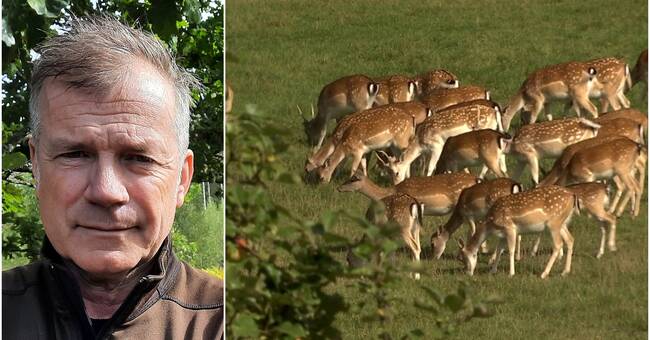The two worst affected counties in recent years are Sörmland and Östergötland, where just over 30 per cent and 21 per cent, respectively, of the total loss of harvest is caused by fallow deer.
- The fallow deer has gained a strong foothold in both counties and there is a high number of ungulates in general.
Then you have to try to hunt harder and keep up as best you can, says Thomas Ekberg, chairman of the Association of Swedish Hunters.
High rents result in poorer management
Despite the fact that Sörmland farmers have major problems, shooting statistics from the Swedish Hunters' Association and Viltdata show that significantly fewer fallow deer are shot in Sörmland than in Östergötland.
What does it depend on?
- In general, the demand for hunting land is greater and the rental prices are twice as high in Sörmland as in Östergötland.
Unfortunately, this means that you get hunting teams that find it pleasant to come out only a couple of times a year, which does not provide the game management that is needed.
This is a big problem, says Thomas Ekberg.
During the last five years, the shooting of fallow deer has been significantly higher in Östergötland.
Photo: SVT Grafik
Milder winters increase the strain
Plenty of food and mild winters are some contributing factors to the stock increasing sharply.
And in some places the situation is very difficult also in Östergötland.
But Thomas Ekberg is hopeful and believes that it is possible to solve some problems.
- I do not think that you spend the time required when we have a high number of deer.
Then you have to manage it.
Unfortunately, it is not enough to go out on the weekend to hunt a little, but you have to lie down, he says.
Hear more about these issues in the clip above.
In Sweden, damage to both cereal crops and fallow deer pastures increased sharply between 2014–2020.
It shows a report from the Swedish Board of Agriculture.
Photo: SVt Garfik

